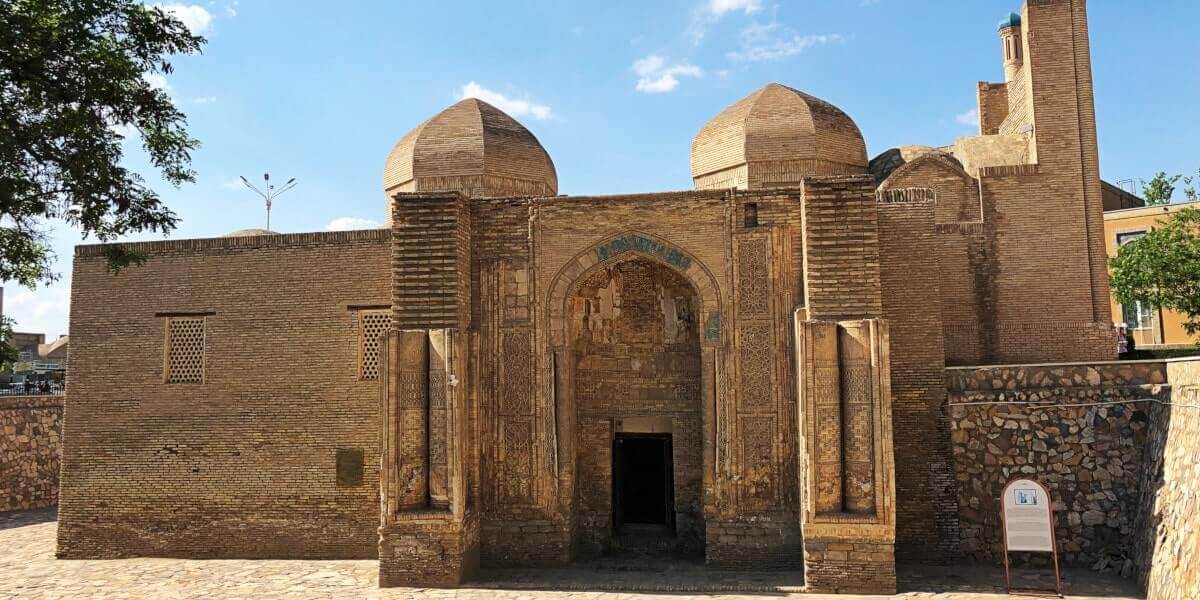The building is one of the oldest surviving mosques in Central Asia and one of the few Bukhara structures that the Mongols did not destroy. The mosque was significantly rebuilt in the 12th and 13th centuries: the lower portal also dates from this time. Over time, the mosque became increasingly submerged under the city’s cultural layers and appeared in a pit. Therefore, in the 16th century, another entrance portal was built at the same level as the ground (4,5 metres higher than the original portal). In the 1930s, the building was finally uncovered and renovated.
The building is rectangular with an area of 12 by 7.5 metres. The original portal is slightly asymmetrical and is framed on the flat roof by two octagonal drums, which are also equipped with octagonal domes. The lower portal is richly decorated with an ornament of custom-carved and layered brick tiles. Geometric patterns adorn the entrance.

The name origin
The name of the mosque goes back to pre-Islamic times. At that time, there was a pit (Magok) at this place. It also had a small bazaar where merchants sold mainly spices and herbs. The second part of the name comes from the term “Attar” means “scent merchant” or “spice merchant”.
Today, the mosque houses a carpet museum.